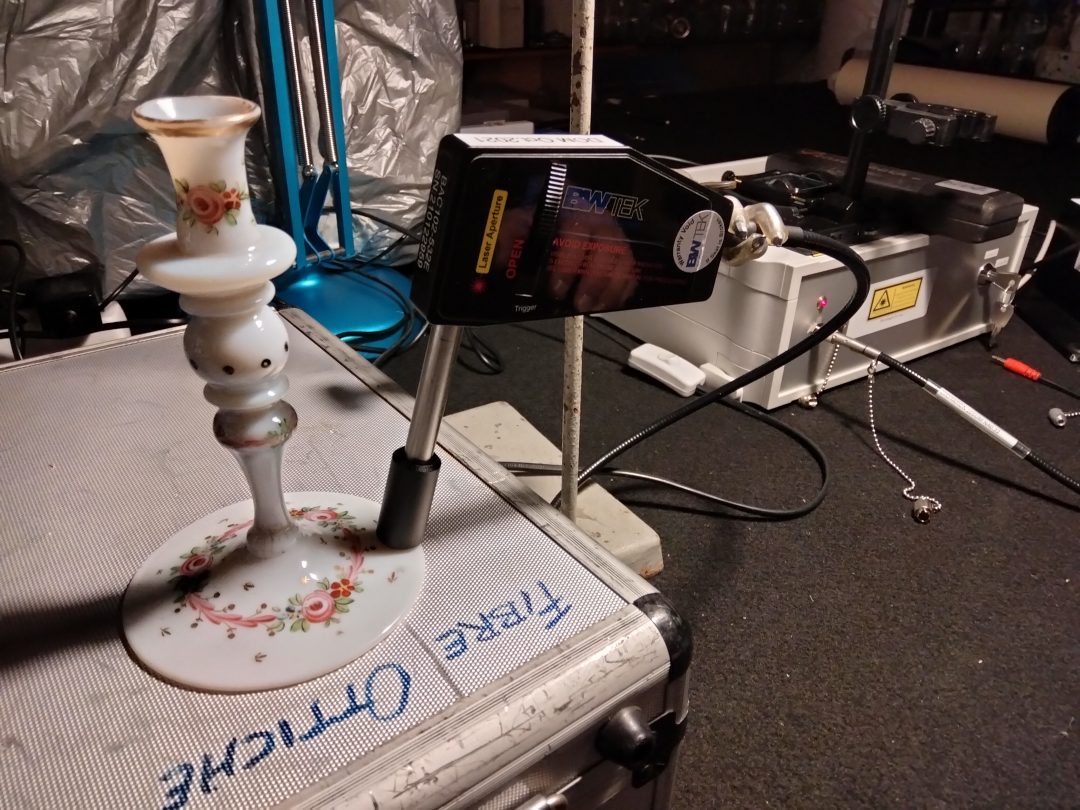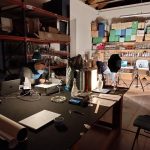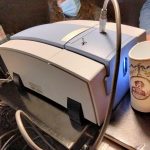User Group Leader: Dr. Teresa Palomar and Dr. Paloma Pastor
Venue: Real Fábrica de Cristales de La Granja.
The “Real Fábrica de Cristales de San Ildefonso” (Spanish Royal Glass Factory) has elaborated high-quality pieces for more than 300 years. However, despite the glass pieces from La Granja are renowned because of their high-quality, up-to-date, chemical analyses of the pieces from La Granja have been occasional. One of the reasons for this analysis’s absence is that the chemical studies of Modern and Contemporary glass pieces are very complicated because usually they are non-fragmented pieces and only portable non-destructive analysis can be applied.
In this MOLAB action, we applied for Reflection Vis Hyperspectral Imaging (400-1000 nm) and Micro-Raman spectroscopy (exc. 532 nm), which was complemented with External reflection mid/near-FT-IR and UV-VIS-NIR reflectance. The objective was the characterization of the enamels used in the decoration, the gold used for gilding, and the opacificants of translucent and opaque pieces. All this information will help to understand the evolution of glass production in the Spanish Royal Glass Factory in the 18th and 19th centuries.
As result of the action, it was identified the bands of different crystals (apatite and fluorides) in the matrix of the milky glass objects, the cobalt ion in the blue pieces, and organic bands in the cold-gilding objects from the organic binders. The chromophores of enamelled glasses were the common ones (iron, cobalt, manganese…).




